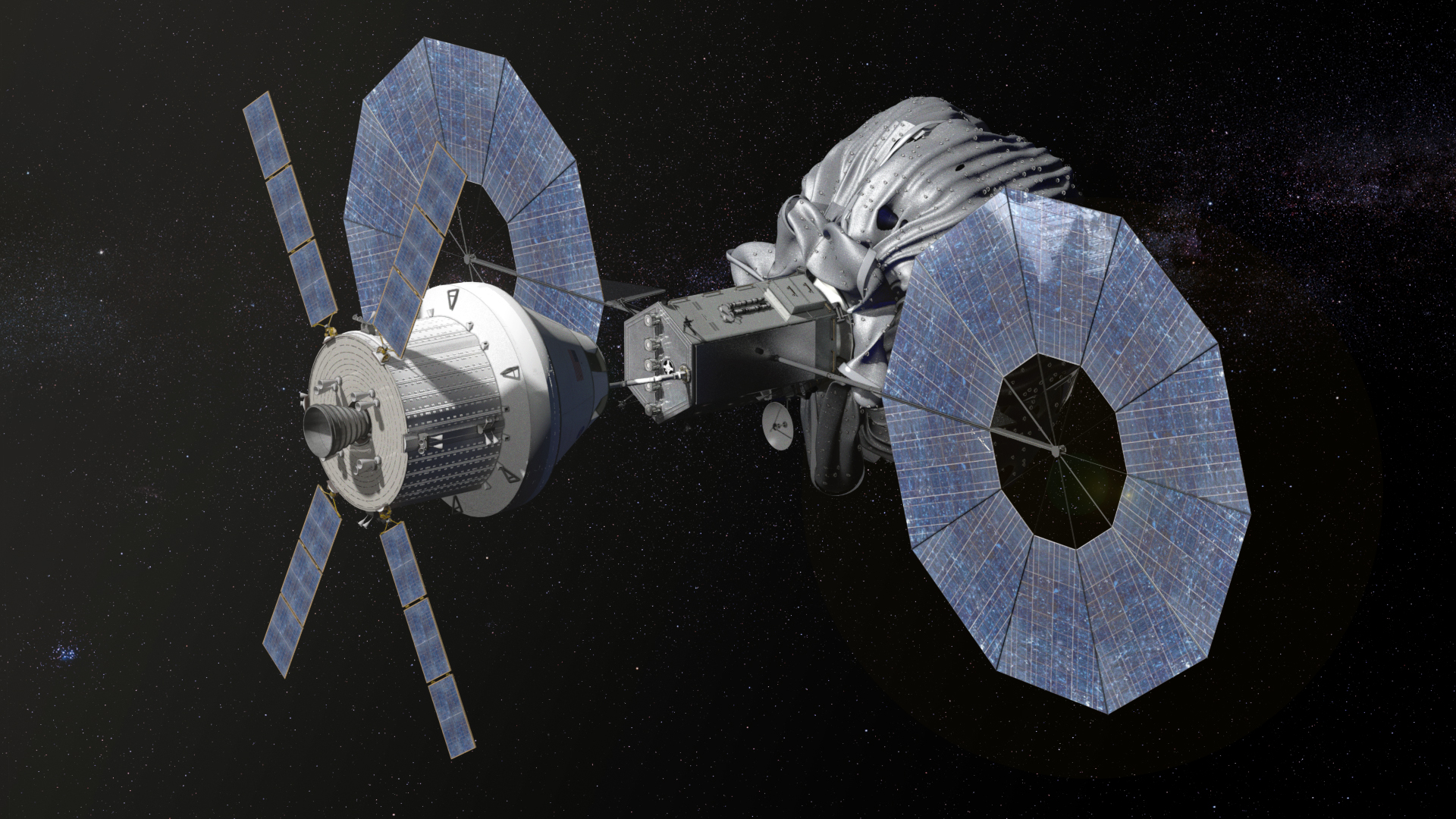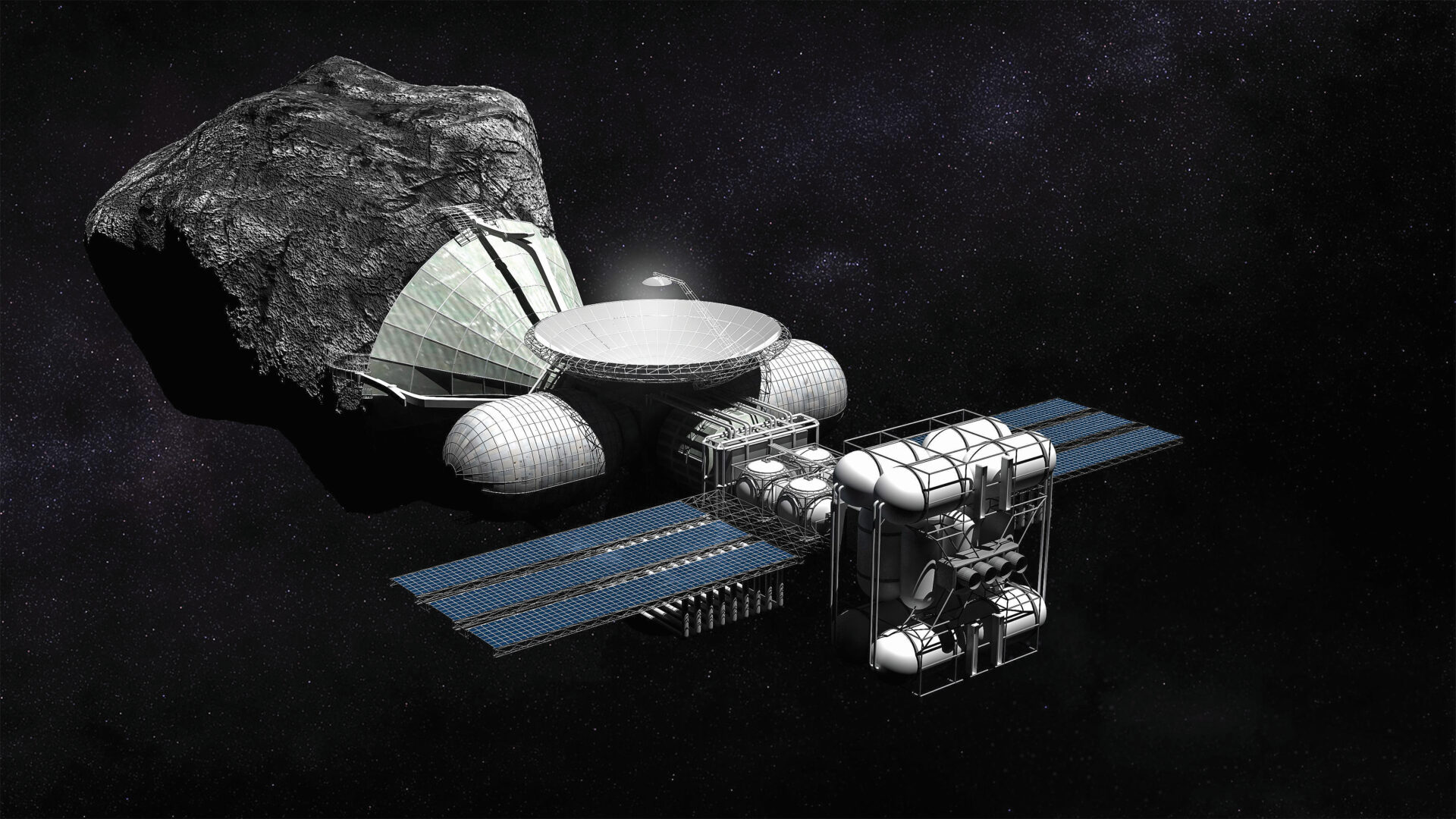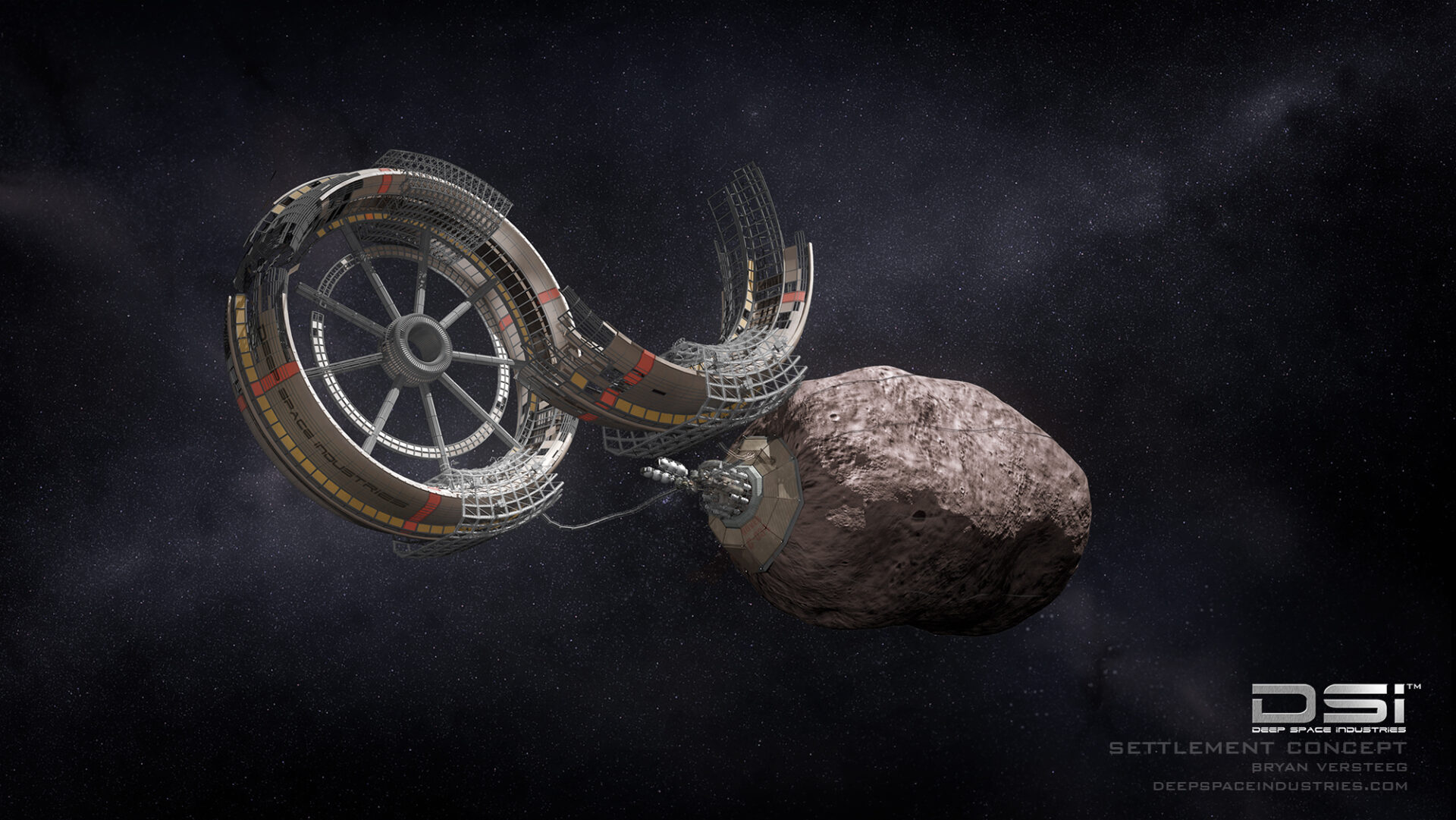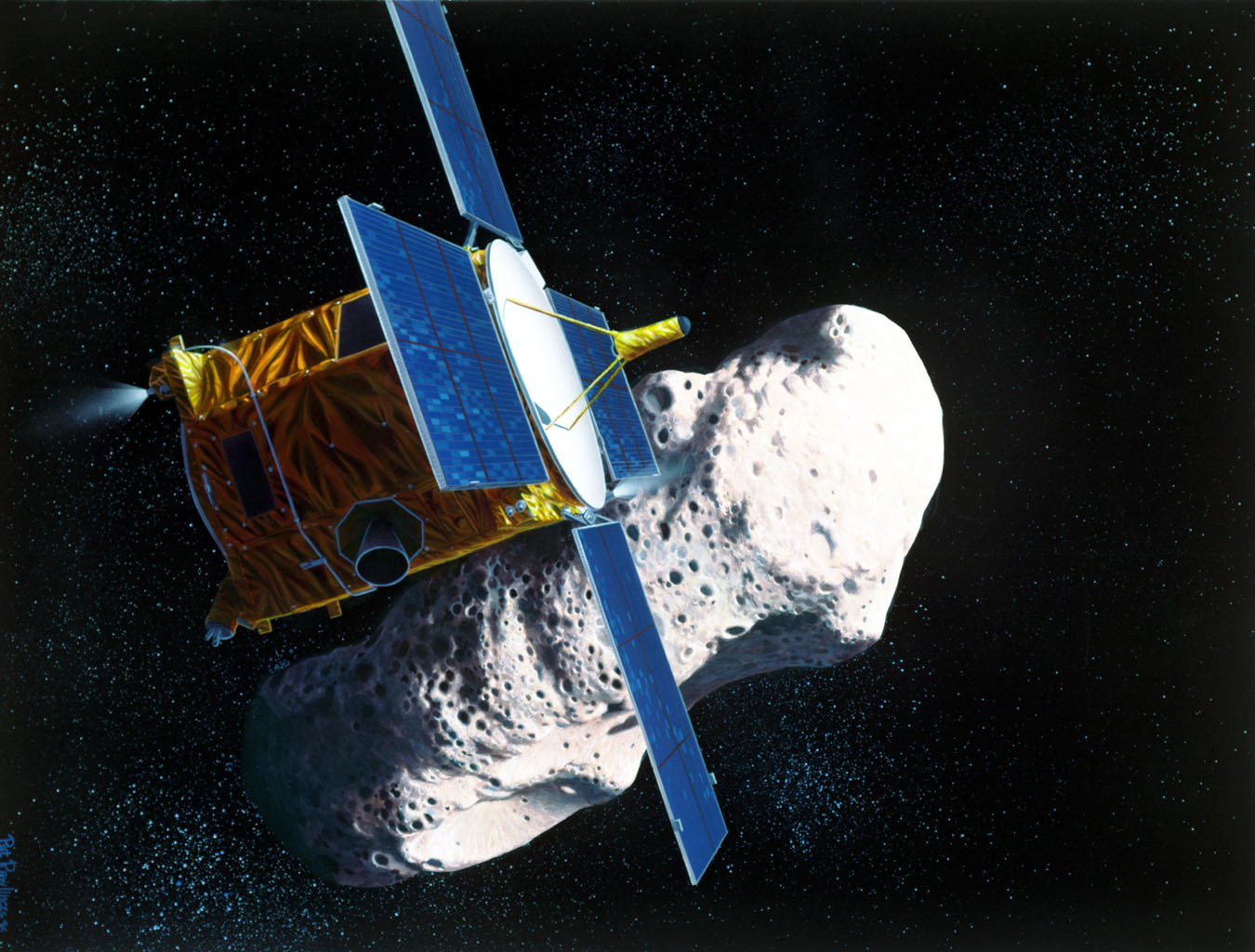As early as in the middle of the XIX century, experts began to realize that the amount of minerals on Earth is limited. At the time, many scientists predicted the depletion of existing deposits by the end of the millennium and the next “global resource crisis”. They did not take into account technological advances that allow us now to use fields that were previously considered too poor (or not considered a source of resources at all — such as oil and gas shale deposits). But even at the current pace of development, they will be exhausted in a maximum of a hundred years. And then humanity will be forced to look up at the sky. The idea to extract “heavenly minerals” was voiced by famous French science fiction writer Jules Verne. In his novel The Chase of the Golden Meteor, he described the discovery of a small cosmic body near Earth, consisting of almost pure gold. The writer was able to predict even some points of not formulated Theory of Relativity yet. Ingenious scientist Zéphyrin Xirdal uses a gravitational wave generator to change the orbit of an asteroid that eventually falls in a deserted corner of Greenland…

Today, many of Jules Verne’s ideas are gradually coming true. Though humans do not know how to control gravity yet, but methods for changing the orbit of celestial bodies illuminating them by a powerful laser are already being developed. Of course, not in order to bring any of these bodies down to Earth, but on the contrary — to avoid a dangerous collision. But in the distant future, when humanity learns to accurately calculate and influence the motion of objects in outer space, one of these methods can be used to “drop” a particularly valuable asteroid into uninhabited areas of one of Earth’s deserts.
What we are looking for on asteroids
In the distant past, the planets of the terrestrial group underwent the so-called gravitational differentiation — heavy chemical elements that were part of their original composition, gradually descended towards the planet’s core, and lighter concentrated in the crust. Therefore, for example, gold and platinum group metals are rare on the earth’s surface and therefore have a high value. Their concentration in the nucleus is much higher, but how to get them from a depth of thousands of kilometers?

In the early stages of the evolution of the solar system, similar differentiation was experienced by smaller planet-like objects moving outside the orbit of Mars. Subsequent migrations of giant planets caused these objects to change their trajectories chaotically and collide with each other. As a result of these processes, the Main Belt of asteroids was formed, some of which are fragments of almost formed protoplanets, which already had a light aluminosilicate crust and a metal core. And now some of these nuclei are moving around the Sun in an almost “naked” form, providing access to valuable chemical elements as those that lie deep in the bowels of the Earth.
Another important property of “space resources” is that the ratio of isotopes — atoms of the same chemical element with different numbers of neutrons and, consequently, different atomic mass — on small bodies of the solar system differs significantly from Earth’s. Mostly light isotopes are present in space. Given the advances in nuclear physics, this factor may also be an important reason to start extracting extraterrestrial resources.

Virtually all mining projects on asteroids involve the deployment of a specialized spacecraft that, using solar energy and drilling rigs, “removes” the necessary minerals and delivers them to Earth — by itself or having loaded them into a separate device with its own control system designed for entering the Earth’s atmosphere and soft planting. A slightly different strategy was envisaged in the ARM (Asteroid Redirect Mission) initiative initiated by US President Barack Obama: to find a relatively small “celestial stone” moving in its orbit near the Earth, “hitch” an electric jet engine to it and transport it closer to our planet. But this was actually a research mission, and in 2017 NASA had to abandon it due to the directive of Donald Trump’s administration.
Who is going to fly to fetch the “heavenly stones”
We have a rather interesting situation about the development of extraterrestrial resources. None of the major state space agencies have announced their intention to work in this field, but a dozen private companies (mostly American) have. These include Asteroid Mining Corporation Ltd., Planetoid Mines Company, NEO Resource Atlas (NEORA), Moon Express, Kleos Space, TransAstra, OffWorld, Aten Engineering, Air Space and Beyond (ASB), as well as Planetary Resources and Deep Space Industries. The last two should be described in more detail.

Planetary Resources was founded in 2009 as Arkyd Astronautics by American engineers and entrepreneurs Eric Anderson and Peter Diamandis. According to them, the search for minerals on asteroids should begin with a remote inspection of potentially accessible objects by small telescopes placed in Earth orbits. The deployment of “constellation” of such telescopes has already begun. However, the launch of their first prototype Arkyd-100, carried out in October 2014, was a failure. The second spacecraft in this series was delivered to the International Space Station in April 2015 by a SpaceX Dragon cargo spacecraft and later was launched into independent orbit. In early 2018, another satellite was launched, which received the number Arkyd 6. Fundraising for the construction of telescopes was carried out, inter alia, on the site for donations Kickstarter. That same year, Planetary Resources became the property of ConsenSys.

Deep Space Industries, founded in 2013, boasts much more activity, but a smaller list of achievements. Among its leaders is a famous American businessman, enthusiast of the “new space” Rick Tumlinson. He has already visited Ukraine several times, studying the possibility of using the Ukrainian experience in rocketry to search for space resources and mine them. To date, the company has not made any launches, but is actively developing high-performance rocket engines and control systems for automatic “asteroid diggers”. One of these engines will be able to use water as a working mass without its prior decomposition into oxygen and hydrogen (and, accordingly, without heavy cryogenic fuel tanks).
The company’s strategy is to predominantly use the mined resources “on site”, i.e. as fuel for rocket engines and to support the crews of interplanetary ships or inhabitants of extraterrestrial settlements (to avoid complex and energy-intensive “lifting” of necessary materials from Earth). The most important substance in space from this point of view is water. But gradually, as the number of such settlements increases and the “interplanetary fleet” develops, it will be possible to search for other “space treasures”.

On January 1, 2019, an agreement was signed to sell Deep Space Industries to the European company Bradford Space. Since then, information about its activity in open sources has significantly decreased. In any case, the date of the company’s launch of at least one experimental spacecraft has not yet been announced.
Long-term goals
If private companies are still just scrutinizing potential sources of extraterrestrial resources, astronomers have been looking for them for a long time — primarily as targets for research missions funded by state space agencies. One of the main criteria is the proximity of the orbit of the asteroid to Earth, which allows you to send there an automatic vehicle with the minimum possible fuel consumption. But no less important are the physical characteristics of the object, which may indicate its composition.

When NASA in the 1990s planned a NEAR (Near-Earth Asteroid Rendezvous) mission to one of the asteroids flying close to Earth, half-kilometer Nereus was chosen as one of the targets. Its perihelion lies just inside the Earth’s orbit, and in aphelion it “flies” to the Main Asteroid Belt, moving for more than 300 million km away from the Sun. In February 2060, it will approach us at a distance of 1.2 million km (during the closing in, in December 2021, the minimum distance to it was about three times greater). The spectral properties of Nereus indicate that it contains a significant amount of metals — mainly iron and nickel. Usually such bodies also contain such a valuable chemical element as iridium, which belongs to the group of platinum metals. In the end, the mission chose a 30-kilometer Eros (433 Eros), which has a “more convenient” orbit, but not such an interesting composition.
On October 25, 2011, while scanning the sky with an automated PanSTARRS system, astronomers discovered an asteroid, which received the previous index 2011 UW158 (after refining the orbit, it was given a permanent number 436724). It can approach the Earth at a distance less than the average radius of the lunar orbit. During the flight on July 19, 2015, when this object approached us at 2.4 million km, it was explored by radar. Scientists were interested in the fact that at a size of about 300 m and a fairly elongated shape, the asteroid makes one revolution around the axis in just 37 minutes. Therefore, it must be a solid piece of metal — with a different composition, it would have been torn apart by centrifugal forces a long time ago. At the same time, the characteristics of the reflected radio beam indicated that this body contains a significant amount of platinum. Its total cost can reach several trillion dollars. Planetary Resources immediately included the asteroid to the list of priority goals of its missions.

The development of space technology will allow traveling not only to nearby asteroids, but also to the “inhabitants” of the Main Belt, which are much harder to reach. NASA is already working on a mission to the “iron asteroid” Psyche (16 Psyche) — most likely, this 200-kilometer object weighing almost 24 quadrillion tons is a fragment of the metal core of a small protoplanet. In the future, it may become a significant source of metals for space conquerors, and the valuable elements contained in it can be mined and sent to Earth.
Of course, for the mining of raw materials on metal asteroids, we have to develop more advanced tools that can efficiently separate fragments of “heavenly stones” or immediately process them to a form convenient for transportation to destination (Earth or colony on a celestial body). The Sun will remain the most accessible source of energy for all these manipulations for a long time: radioisotope thermoelectric generators are too expensive and pose a risk of radioactive contamination, and compact fusion plants currently exist only on the pages of science fiction. It is also worth noting that the creation of most of the described equipment is still at the stage of preliminary designs. But work in this direction continues, and, as noted above, it is mainly a domain of private companies.
“Privatizing” asteroids
The legal framework for activities outside the Earth’s atmosphere is now the Outer Space Treaty, signed by the United States, the Soviet Union and the United Kingdom in 1967. As of mid-2019, 109 countries have officially joined it. This treaty prohibits the States Parties deploying nuclear or other weapons of mass destruction in Earth orbit, the Moon, any celestial body or station in outer space. It also restricts the use of the moon and other celestial bodies to purely peaceful purposes, explicitly forbidding the testing of any weapons there. The treaty states that no country can claim possession of a space body of natural origin or part of it, and the sovereignty of states extends only to space objects directly launched by them.

The situation changes if even a crumb of a celestial body enters the spacecraft. Then it actually becomes part of it, and the principles of protection of property rights can be applied to it. Legislators have been guided by such considerations when drafting a law that allows American companies to extract raw materials in outer space. According to him, the US government has no right to confiscate any extraterrestrial substance extracted by anyone. In addition, entrepreneurs working in this field have been exempted from certain taxes and inspections until 2023, which should stimulate investment activity in this area. Barack Obama signed the new law on November 26, 2015.
Not many countries have followed the example of the United States. Among those who have already done so is the Grand Duchy of Luxembourg — in February 2016 its government announced that it would make every effort to “encourage the industrial sector to mine… space resources” (including creating a “legal framework” and regulatory incentives for core companies). In June 2016, the state announced plans to “invest more than USD 200 million in research, technology demonstrations and the direct purchase of shares in [private space] companies moving to Luxembourg”. In confirmation of these intentions, on November 3, 2016, Luxembourg Deputy Prime Minister Etienne Schneider signed an investment agreement worth 25 million euros with the President of Planetary Resources Chris Lewicki. The money will be spent on building and launching a space telescope to photograph asteroids in the infrared range in order to search for water ice and water-containing minerals.
In 2017, Luxembourg, according to the government’s press service, became “the first European country to introduce a law giving companies ownership of resources mined in space” and is going to actively promote public policy on space resources. We hope that his example will inspire other countries on the planet — especially those that have rocket and space technology.
It is difficult to say when the inhabitants of our planet will be able to touch their first “celestial minerals” mined on asteroids. It is possible that this will happen in the next decade. If we talk about large-scale industrial production to supply Earth enterprises — this is certainly a matter of much more distant future. But the first steps towards it have already been made today, and the fact that private companies are going to deal with asteroid resources, convincingly testifies in favor of the prospects of this area of astronautics.

